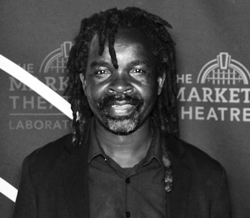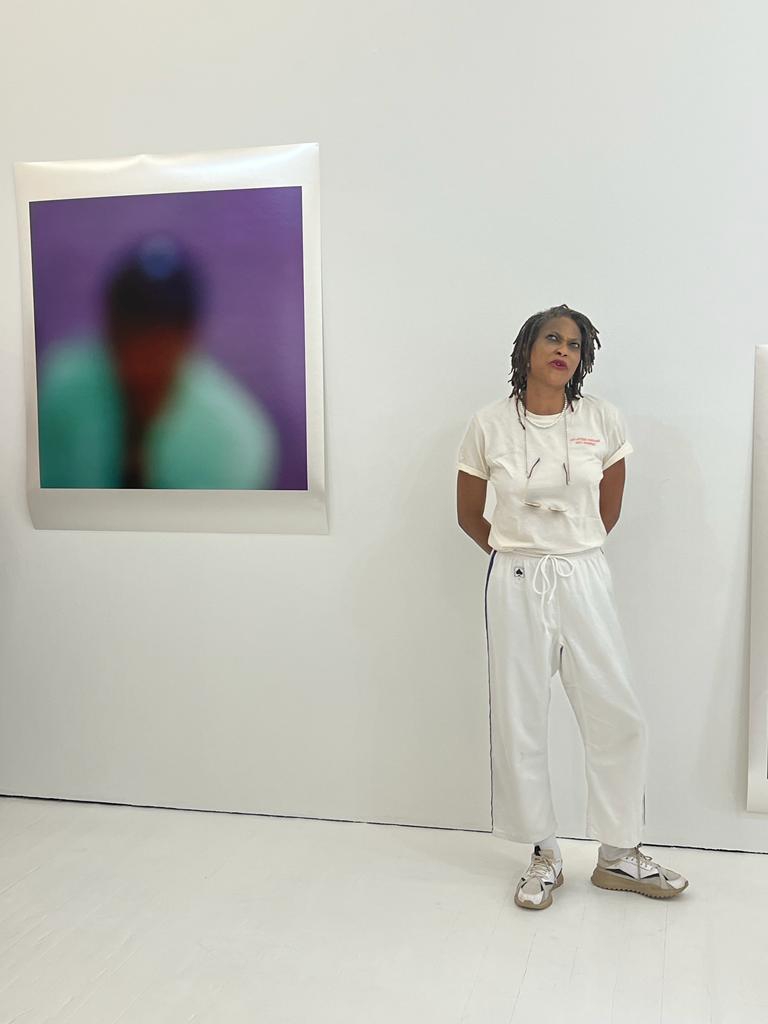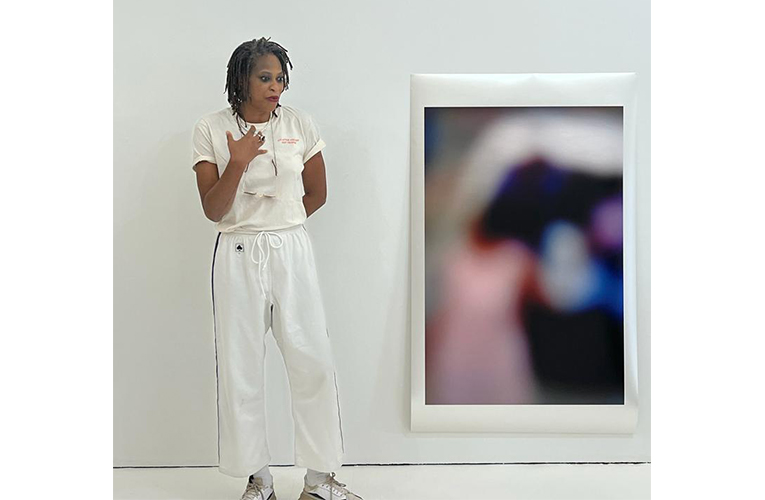The exhibition Sama Guent Guii by Mame-Diarra Niang is a portrait of the artist’s complex multi layered life
By Edward Tsumele, CITYLIFE/ARTS Editor

Her photographs at first appear to be portraits, but because they are taken in a way that they are out of focus, they appear to slowly fade away, disappearing and eventually dissolving into abstract objects. As you look long enough and close enough, the photographs become something else open to a wide interpretation.
This act of appearing, disappearing and eventually dissolving into complex pieces of art, in many ways represents the life of the artist Mame-Diarra Niang and its complexity.
“Being born as a mixed race person in France (father Senegalese and mother a white French woman), I was confused myself about who I was as I grew up. In a way these portraits are a portrait of me. These photographs are photographs of black bodies and their space in life. Being a black body in this world comes with complexities,” Mame-Diarra Niang told visitors at the opening of her solo exhibition titled Sama Guent Guii at Stevenson Gallery in Parktown, Johannesburg on Saturday, October 8, 2021.
Although she has been with Stevenson Gallery for the past nine years and has exhibited in their Cape Town Gallery as well as in the Netherlands, this is the first time that she has exhibited in Johannesburg. She flew from Paris where she is based for this exhibition, she told CITYLIFE/ARTS at the opening of the exhibition, which will run till November 19, 2022.
This exhibition in many ways is Mame-Diarra Niang’s way of retracing her ancestors to Africa, and connecting with them in Senegal where her father came from.
“Going to Senegal to burry my father two years ago, felt like my father was taking me back to my ancestors, reuniting me with them,” she explained.
And so in a way, even though these portraits are of different black people taken in different places and in different situations, in reality these are a portrait of the artist, her life and times in a world that often has an uncomfortable relationship with black bodies that at best are ignored as If they do not exist, even as they are very much visible in different ways and in various manifestations. At worst they are deliberately marginalised, pushed to the margins of broad society in an attempt to erase their culture and their whole existence.
In the case of the artist, she has also to deal with another layer of marginality from the mainstream culture as a lesbian person of colour.
Printed on metallic paper and exhibited across the floors and walls of the gallery, the images in this body of work recede and refract to create a tableau of abstracted ‘non-portraits’, alluding to a subconscious realm. In Sama Guent Guii, translating from Wolof to ‘this dream that I had’, Niang explores how unknowing is formative in becoming.
The formal and conceptual motifs key to works in Niang’s series Call Me When You Get There and Léthé are extended here. While previous works have probed abstraction as a means of navigating the territory of the self, in Sama Guent Guii Niang uses ethereality as an affirmation of her refusal to portray blackness for herself and for others.
Through suggestive hues and elusive figures, Niang moves from speculation to representation. Following an introspective period of grappling with her upbringing across Senegal, the Ivory Coast and France, Niang presents an understanding of her embodied self as possessive of intricacy and infinitude. The artist offers the uncertainty of the blur as the seed of conviction, stating, ‘the forgotten dream is the necessary memory’.

She writes: “I walked along with the lingering thought that I knew nothing about the history of my late father and the lineage of my black ancestors; my ancestral memory felt akin to the iridescent surface of a bubble, like a feeling of loss upon awakening from a dream impossible for me to recall.
This series feels like the abstract idea that I have of myself, the acceptance that forgetting is also a starting point and a fleeting, necessary memory. Sama Guent Guii, in which my memory is a dream.
We are never the same when we wake up.
I have to think about this more…
I see in me, deep within me, the traces of my ancestors. I am the past that resurfaces. A past that cannot be destroyed, nor diminished. I am the sedimentary rock of this fossilized past, the trace of living organisms… abstract in sensation… in reverie…
Where am I from? Who am I?
I am the past which reappears
I am what is transformed by their memories and my memories
I am these black bodies that I do not recognize
I am this blur
I am made of memory and oblivion
I am this monument of nature, this being that is continually being reborn
This other, who sees themselves as the other.”
.Sama Guent Guii October 8-19 November is at Stevenson Gallery, 46 7th Avenue, Parktown North, Johannesburg.
T +27 (0)11 403 1055










